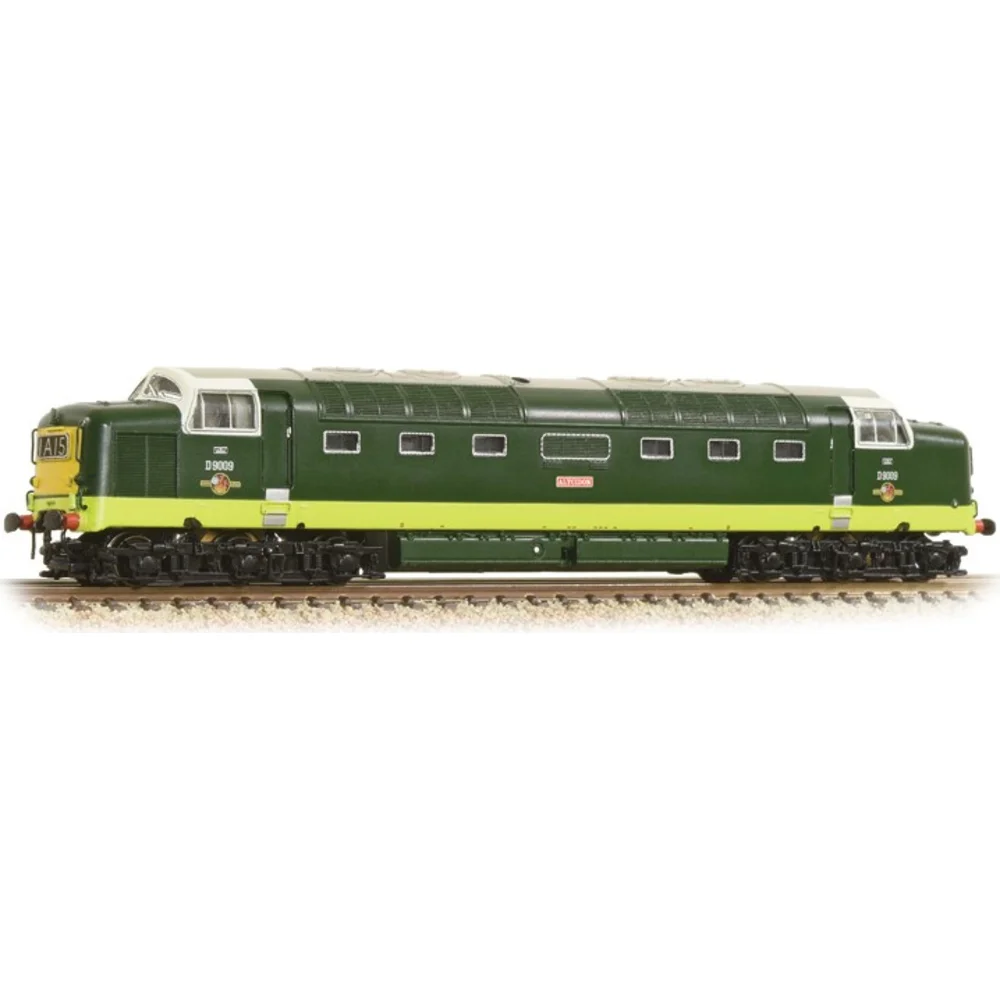Graham Farish 371-285A
British Rail Class 55 D9009 "Alycidon" British Railways Two-Tone Green
Class & Prototype
- Class: British Rail Class 55
- Traction: Diesel
- Transmission: Electric
- Built: 1961-1962
- Total Built: 22
The BR Class 55 "Deltic" was British Railways' most powerful diesel locomotive, producing 3,300hp from twin Napier Deltic engines in a revolutionary triangular configuration. Twenty-two locomotives built 1961-1962 transformed East Coast Main Line services, hauling The Flying Scotsman and other prestigious expresses at up to 100mph between London and Edinburgh. Named after British Army regiments, these iconic locomotives served until 1982 when High Speed Trains replaced them. Six survive in preservation, with three maintaining mainline certification. The distinctive exhaust roar from opposed-piston engines made Deltics instantly recognizable. Available in OO gauge from Accurascale and Bachmann, N gauge from Graham Farish, and O gauge from Heljan, with premium DCC sound models capturing the authentic Napier engine soundtrack.
No prototype found.
Operator & Livery
- Operator: British Railways
- Livery: Two-Tone Green
British Railways transformed Britain's fragmented rail network into a unified national system following nationalisation on 1st January 1948. Created from the "Big Four" companies under the Transport Act 1947, BR operated most of Great Britain's railways until rebranding as British Rail in 1965, managing over 20,000 route miles and inheriting nearly 20,000 locomotives of diverse designs.
The organisation pioneered standardisation through its revolutionary BR Standard locomotive programme (1951-1960), producing 999 advanced steam engines under Robert Riddles' direction. These included the versatile Britannia Pacifics, mighty 9F freight engines, and mixed-traffic classes that incorporated the best features from all predecessor companies. The 1955 Modernisation Plan accelerated diesel and electric traction development, creating fascinating mixed-traction operations.
Notable achievements included establishing unified locomotive classification systems, introducing distinctive corporate liveries, and managing the complex transition from steam to modern traction. BR's six regional structure preserved operational diversity whilst enabling standardisation of practices, signalling, and rolling stock that had eluded private enterprise for over a century.
The BR era represents steam traction's final flowering alongside emerging diesel technology, creating unparalleled locomotive variety. Today, this heritage remains highly popular with railway enthusiasts through extensive preserved fleets, heritage railway operations, and comprehensive model ranges from manufacturers like Hornby, Bachmann, and Dapol, making BR subjects essential for authentic post-war British railway modelling across all scales.
